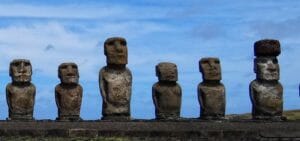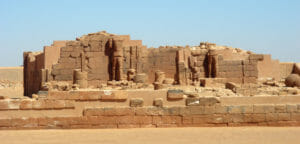The Horrors Humans Have Inflicted on the Planet’s Wilderness
The spread of the human horde means under a quarter of the world’s habitable land now counts as wilderness. On this finite planet, human needs always come first. (Marius Ciocirlan on Unsplash)
On this finite planet, human needs always come first. (Marius Ciocirlan on Unsplash)
Only 23% of the planet’s habitable terrestrial surface now remains as undisturbed wilderness, thanks to the spread of the human horde.
A century ago, as the human population explosion began, 85% of the world was undisturbed living space for all the other species. Yet between 1993 and 2009 – in the years that followed hard on the first global summit to consider the state of the planetary environment – an aggregation of areas of wilderness larger than India was delivered over to human exploitation, scientists warn in the journal Nature.
“These results are nothing short of a horror story for the planet’s last wild places,” said James Watson, a scientist at the University of Queensland and with the Wildlife Conservation Society.
“The loss of wilderness must be treated in the same way we treat extinction. There is no reversing, once the first cut enters. The decision is forever.”
Ocean impact
Professor Watson and colleagues argued in August that humans had in some way poisoned, polluted, exploited or disturbed almost all the planet’s oceans: only 13% could now be classified as undisturbed.
Now he and others have addressed the state of the wild terrestrial soils and rocks. Take Antarctica – essentially uninhabited, and with no terrestrial wildlife – out of the equation, and the scale of planetary devastation becomes more stark: humans have now left their mark on 77% of the world’s living space.
And the remaining wilderness is unevenly distributed: just 20 nations hold or govern 94% of the remaining marine and terrestrial wilderness areas. Russia, Canada, Australia, the US and Brazil host 70% of these unspoiled spaces.
Professor Watson and many others have repeatedly argued that humankind continues to put the world’s wildlife at risk. A new study by the World Wide Fund for Nature highlights the scale of destruction, but repeated surveys by teams of researchers on all continents have pointed up the same danger.
The combination of human intrusion into the wilderness and the spectre of climate change is a disaster for the 10 million or so species, most of them as yet unidentified, with which humans share the planet.
“These results are nothing short of a horror story for the planet’s last wild places”
“A century ago, only 15% of the Earth’s surface was used by humans to grow crops and raise livestock,” Professor Watson said.
“Today, more than 77% of land – excluding Antarctica – and 87% of the ocean has been modified by the direct effects of human activities. It might be hard to believe, but between 1993 and 2009, an area of terrestrial wilderness larger than India – a staggering 3.3 million square kilometres – was lost to human settlement, farming, mining and other pressures.
“And in the ocean, the only regions that are free of industrial fishing, pollution and shipping are almost completely confined to the polar regions.”
Your support matters…Independent journalism is under threat and overshadowed by heavily funded mainstream media.
You can help level the playing field. Become a member.
Your tax-deductible contribution keeps us digging beneath the headlines to give you thought-provoking, investigative reporting and analysis that unearths what's really happening- without compromise.
Give today to support our courageous, independent journalists.





You need to be a supporter to comment.
There are currently no responses to this article.
Be the first to respond.